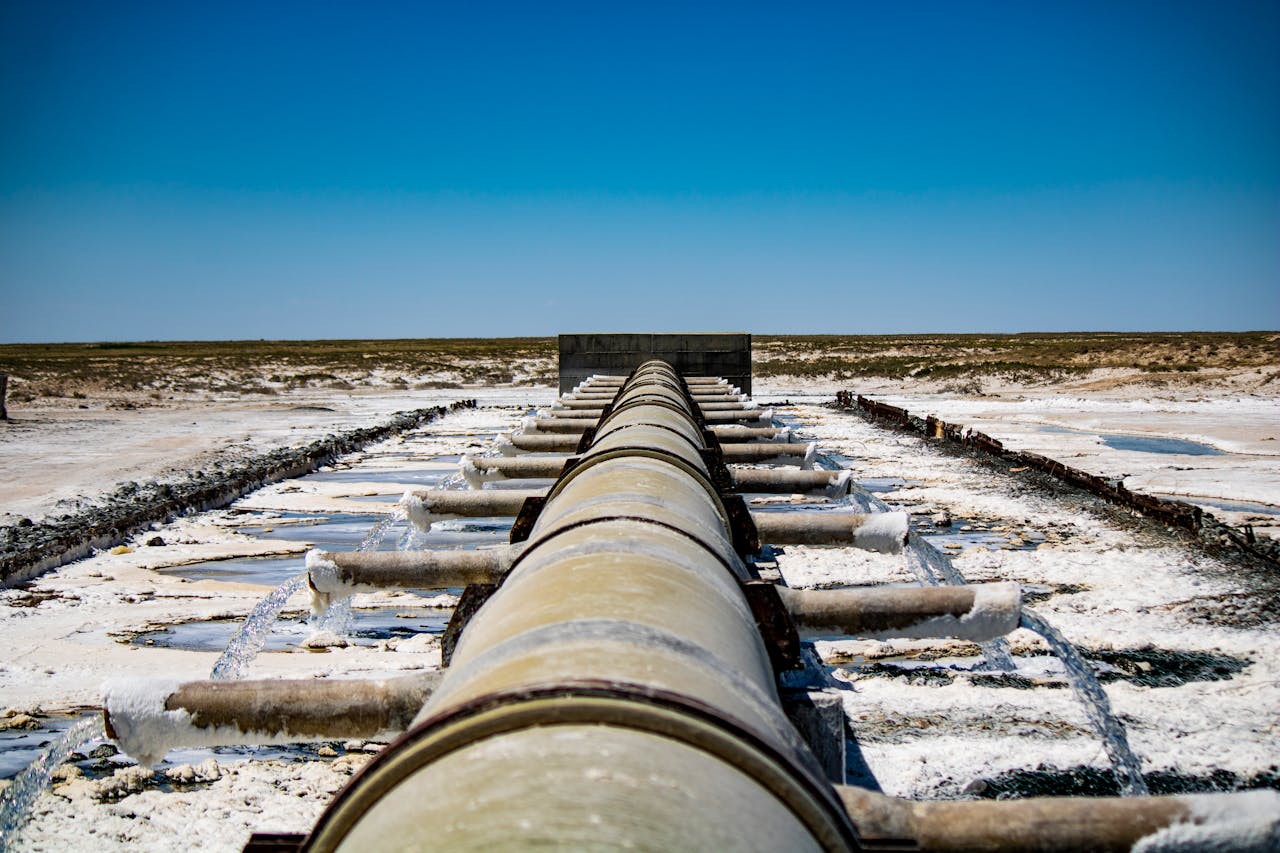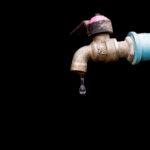Why Maintaining Water Infrastructure is Just as Important as Building It

Imagine spending a fortune building a beautiful house but never fixing leaks, repainting walls, or replacing broken pipes. Over time, the house falls apart, and repairing it costs much more than if you had maintained it properly. This is what happens when water infrastructure is ignored after construction.
Water systems – like pipes, treatment plants, and dams – are essential for clean drinking water and sanitation. However, many governments and organizations focus on building new systems while neglecting existing ones. Without regular maintenance, these systems wear out, leading to water shortages, health risks, and expensive repairs. This article explores why maintaining water infrastructure is just as crucial as building it and how it can save money, lives, and the environment.
The Lifespan of Water Infrastructure
Water infrastructure is built to last, but not forever. Pipes can function for 50 to 100 years, and dams may last even longer. However, factors like rust, pressure from growing populations, and extreme weather conditions can weaken them over time.
For example, many cities worldwide still use water pipes that were installed over a century ago. As these pipes age, they are more likely to break, causing leaks and contamination. If not repaired or replaced in time, entire water systems can fail, leaving communities without clean water.
Common Problems in Aging Water Systems
Older water systems face many challenges, including:
- Leaks and pipe bursts – Small leaks waste millions of liters of water every day. In some cases, old pipes suddenly burst, cutting off the water supply to entire neighborhoods.
- Water contamination – Cracked or corroded pipes can let in bacteria, chemicals, or dirt, making water unsafe to drink.
- Higher costs for emergency repairs – Fixing a broken system at the last minute is always more expensive than regular maintenance. Sudden failures also disrupt businesses, hospitals, and homes.
For example, in some U.S. cities, old lead pipes have contaminated drinking water, causing serious health problems. If these pipes had been replaced earlier, such crises could have been avoided.
The Hidden Costs of Neglect
Ignoring water infrastructure doesn’t just affect pipes and treatment plants – it also impacts people and the economy. Some of the biggest hidden costs include:
- Expensive repairs and replacements – Fixing a failing system costs much more than keeping it in good shape from the start. Governments often spend billions on emergency solutions instead of routine maintenance.
- Water loss – Leaky pipes mean wasted water. In some places, up to 30% of treated water is lost before it even reaches homes. This is a huge waste of resources and money.
- Health risks – When water pipes or treatment plants fail, people may drink unsafe water, leading to diseases like cholera and diarrhea. Poor sanitation due to broken sewage systems also spreads infections.
- Economic losses – Businesses, farms, and industries rely on a steady water supply. When infrastructure fails, factories shut down, crops die, and companies lose money.
For example, Cape Town, South Africa, nearly ran out of water in 2018 because of a combination of drought and poor water management. If better maintenance and planning had been in place, the crisis could have been avoided.
Preventative Maintenance vs. Emergency Repairs
Taking care of water infrastructure before problems arise is always better than dealing with sudden failures. Preventative maintenance means checking, repairing, and upgrading systems regularly to avoid bigger issues.
- Routine inspections – Regularly checking pipes, pumps, and treatment plants helps detect small problems before they turn into major failures.
- Replacing old parts – Instead of waiting for pipes or equipment to break, replacing them on time ensures smooth operation.
- Cleaning and upkeep – Dams, reservoirs, and treatment plants need regular cleaning to prevent blockages and contamination.
Emergency repairs, on the other hand, are costly and often cause major disruptions. When a water main bursts unexpectedly, entire communities can lose water for days. The cost of fixing such damage is usually much higher than what it would have cost to maintain the system properly in the first place. That’s why prioritizing preventative maintenance saves money, reduces water loss, and ensures people always have access to clean water.
Climate Change and Its Impact on Water Infrastructure
Climate change is making it harder to manage water systems. Rising temperatures, extreme weather, and shifting rainfall patterns put extra pressure on pipes, dams, and treatment plants.
- Floods and heavy rains – Too much water at once can overwhelm drainage systems, leading to floods and damage.
- Droughts – Less rainfall means water sources dry up, making it difficult to supply enough water to communities and industries.
- Rising sea levels – Coastal areas face the risk of saltwater mixing with freshwater sources, making the water unsafe to drink.
To keep water systems strong, infrastructure needs to be designed with these challenges in mind. More resilient pipes, better drainage planning, and advanced technology can help protect water supplies from the effects of climate change.
Funding and Investment in Water Infrastructure Maintenance
Keeping water systems in good shape requires money. However, governments and organizations often prioritize building new projects over maintaining existing ones.
- Public funding – Many water systems rely on government budgets, which may not always have enough funds for regular upkeep.
- Private investments – Some countries involve private companies in maintaining water systems through partnerships and long-term contracts.
- Community involvement – Local water boards and citizen groups can help by raising funds and ensuring authorities take maintenance seriously.
When maintenance is ignored due to a lack of funding, the cost of fixing failing systems later is often much higher. Investing in upkeep now can prevent expensive emergencies in the future.
The Role of Technology in Water Infrastructure Maintenance
Technology is making it easier to monitor and maintain water systems efficiently. Modern tools help detect problems early, reduce water waste, and extend the life of infrastructure.
- Smart sensors – These devices detect leaks, changes in water pressure, and contamination in real-time.
- Drones and AI – Drones can inspect large pipelines and dams, while artificial intelligence helps predict when repairs are needed.
- Automated control systems – Advanced software can manage water flow, detect inefficiencies, and prevent breakdowns.
By using technology, water utilities can save time and money while ensuring people always have access to clean and reliable water.
The Impact of Poor Maintenance on Public Health
When water infrastructure is not properly maintained, the quality of drinking water can suffer. Broken pipes, untreated water, and contamination can lead to serious health problems.
- Waterborne diseases – Bacteria, viruses, and parasites can spread through unclean water, causing illnesses like cholera, typhoid, and diarrhea.
- Chemical contamination – Old pipes and poor treatment processes can lead to harmful substances, like lead or pesticides, entering the water supply.
- Service disruptions – If maintenance is neglected, pipes can burst or treatment plants can fail, leaving communities without safe drinking water.
Regular maintenance ensures water stays clean, safe, and available to everyone. Preventing contamination is always better than dealing with the consequences later.
Case Studies: Successful Water Infrastructure Maintenance Programs
Some countries and cities have prioritized maintenance and seen great results. These examples show the benefits of taking care of water systems:
- Singapore – The country uses advanced technology, strict monitoring, and regular upgrades to keep its water infrastructure in top condition, ensuring a reliable supply.
- The Netherlands – With a strong focus on water management, the Dutch government invests heavily in maintaining dikes, canals, and water treatment plants to prevent flooding and contamination.
- New York City, USA – The city protects its water supply through continuous maintenance of its reservoirs, pipes, and treatment facilities, ensuring clean water for millions of residents.
These case studies prove that investing in maintenance leads to long-term benefits, from improved public health to lower costs.
How Individuals and Communities Can Help Maintain Water Infrastructure
While governments and companies are responsible for maintaining large water systems, individuals and communities also have a role to play.
- Reporting leaks and pipe bursts – If people notice water leaks in their homes or streets, reporting them quickly can prevent bigger problems.
- Using water wisely – Reducing unnecessary water use helps ease the pressure on supply systems, extending their lifespan.
- Supporting policies and initiatives – Encouraging local leaders to invest in water infrastructure can lead to better maintenance and long-term improvements.
Small actions, when combined, make a big difference in keeping water infrastructure strong and reliable for future generations.
The Role of Technology in Water Infrastructure Maintenance
Technology is changing the way water systems are monitored and maintained. With the right tools, issues can be detected early, reducing costs and preventing major failures.
- Smart sensors – These devices track water quality, pressure, and leaks in real-time, helping authorities respond quickly to problems.
- Predictive maintenance – Using data from past repairs, AI can predict when pipes or treatment plants need fixing before they break down.
- Drones and robotics – Some cities use drones and robots to inspect hard-to-reach pipes and reservoirs, making maintenance safer and more efficient.
Investing in technology ensures that water infrastructure stays strong and continues to provide clean water without frequent breakdowns.
Conclusion
Building water infrastructure is essential, but keeping it in good shape is just as important. Without regular maintenance, pipes crack, pumps fail, and water quality drops. This leads to wasted resources, expensive repairs, and public health risks.
Strong policies, adequate funding, and the use of modern technology can make maintenance easier and more effective. Countries that prioritize long-term care for their water systems end up saving money and ensuring a steady supply of clean water for their people.
Organizations, like Aqua Maya, play a vital role in supporting water infrastructure in underserved areas and should be encouraged. By focusing on sustainable solutions, Aqua Maya helps communities keep their water systems running efficiently for years to come.
Investing in maintenance today means fewer crises tomorrow. If we want clean, reliable water for future generations, we must take care of the systems that deliver it now.
Sources
1. https://www.dcceew.gov.au/about/news/why-water-infrastructure-matters
2. https://www.waterandwastewater.com/infrastructure-building-a-robust-future/
3. https://iwa-network.org/city/singapore/
4. https://wildernessclassroom.org/clever-dutch-manage-water/
5. https://dec.ny.gov/nature/waterbodies/watersheds/management/new-york-city-water-supply
6. https://www.mdpi.com/2076-3417/13/4/2304






